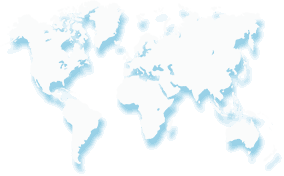Does your industrial wastewater treatment program meet National Effluent Limitation Guidelines (ELGs)? If you are in one of the 18 industrial categories identified by the Government Accountability Office as a top hazard category, you may soon find yourself subject to more stringent pollution control regulations and required to implement new industrial wastewater treatment technologies.
With the establishment of the Clean Water Act in 1972, the Environmental Protection Agency (EPA) set strict Effluent Limitation Guidelines (ELGs) that limit the maximum contaminant levels allowed to be present in industrial wastewater and discharge water. Manufacturers and industrial businesses are required by law to utilize water treatment technologies that reduce contaminants in wastewater to within acceptable limits prior to discharge. WaterProfessionals® specializes in creating custom industrial wastewater treatment systems that meet the Effluent Limitation Guidelines for a variety of industries.
There are currently 126 high priority pollutants regulated by industrial ELGs. Regulated pollutants range from Acenaphthene to Zinc, with maximum allowed contamination levels in discharge water (wastewater) varying by industry.
Since the mid-1970’s, the EPA has promulgated ELGs for 58 industrial categories, with over 450 subcategories. According to the EPA, Effluent Limitation Guidelines currently control pollution from close to 60,000 industrial facilities and annually prohibit the discharge of 700 billion pounds of pollutants into the Nation’s surface water1.
However, in a September 2012 Water Pollution report, the Government Accountability Office (GAO) – a congressional watchdog that investigates the effectiveness of government programs – identified 18 industrial categories that maintained hazard ranking scores in the top 95% in 2010. Hazard ranking scores are a measurement used by the EPA to assess the relative threat of hazardous substances leaking into the environment. Businesses in the following 18 categories, identified as having a high hazard ranking, could face revised ELGs and be required to implement new water treatment technologies to better control discharge water and wastewater pollutants:
| Industrial Category | ELGs Last Revised |
|---|---|
| Cement Manufacturing | 1995 |
| Coal Mining | 2002 |
| Fertilizer Manufacturing | 1995 |
| Inorganic Chemical Manufacturing | 1984 |
| Landfills | 2000 |
| Metal Molding and Casting | 1986 |
| Mineral Mining and Processing | 1995 |
| Nonferrous Metals Manufacturing | 1990 |
| Oil and Gas Extraction | 2012 |
| Ore Mining and Dressing | 1988 |
| Organic Chemicals, Plastics & Synthetic Fibers | 1993 |
| Pesticide Chemicals | 1998 |
| Petroleum Refining | 1985 |
| Plastics Molding ad Forming | 1985 |
| Pulp, Paper and Paperboard | 2012 |
| Rubber Manufacturing | 1995 |
| Textile Mills | 1983 |
| Waste Combustors | 2004 |
“EPA and the nation have made great strides in reducing the pollutants in wastewater discharged from point sources, such as industrial facilities, since the Clean Water Act was passed. EPA’s effluent guidelines program has been key in contributing to these results by establishing national uniform limits on pollutant discharges for various industrial categories. Progress within the program has slowed, however, and numerous effluent guidelines for particular industrial categories have not been revised for 2 or 3 decades, although the act calls for EPA to routinely review its effluent guidelines and update or add to them as appropriate” ~ Government Accountability Office (GAO).
WaterProfessionals® suggests manufacturers take a moment to check the current ELGs for your industry and ensure your wastewater treatment system is operating in compliance. The EPA also has several Effluent Limitation Guidelines under development that will impact 5 additional industries, bringing the total regulated industry count up to 62. These industries are: Chlorine and Chlorinated Hydrocarbon; Construction and Development; Dental Amalgam; Steam Electric Power Generation; and Unconventional Oil and Gas Extraction. On September 30, 2015 the EPA finalized rules revising the regulations for the Steam Electric Power Generating category
For assistance in implementing a custom wastewater treatment system, or industrial water filtration system, contact the WaterProfessionals®. We have four convenient locations in the Southeast: Greenville, South Carolina; Asheville, North Carolina; Knoxville, Tennessee and the Tri-Cities, Tennessee area. From these locations we serve manufacturing facilities throughout North America.
1Source: Government Accountability Office, September 2012 Water Pollution: http://www.gao.gov/assets/650/647992.pdf

